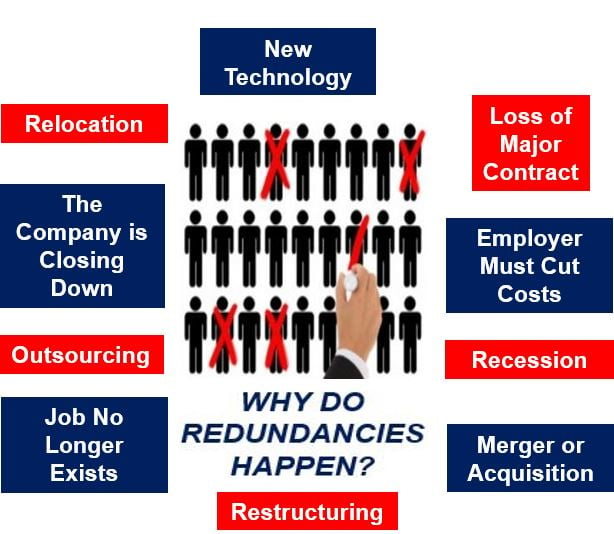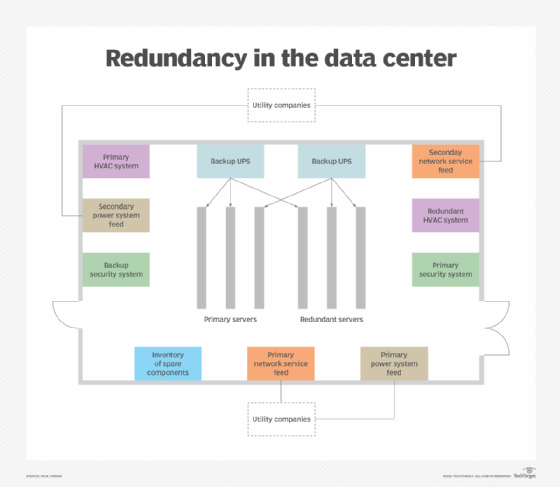Who Pays Redundancy Money? Understanding Company Duties in the UK
Who Pays Redundancy Money? Understanding Company Duties in the UK
Blog Article
Investigating the Interaction Between Business Redundancy and Organizational Versatility for Future Growth
In the vibrant landscape of today's business world, the elaborate partnership in between firm redundancy and organizational adaptability emerges as a critical element for sustained growth and success. Business commonly encounter the obstacle of striking a delicate balance between keeping a level of redundancy to alleviate threats and promoting flexibility to react promptly to the ever-evolving market needs.
Relevance of Firm Redundancy
Firm redundancy is a crucial element that enhances organizational resilience and mitigates operational risks. By integrating redundancy measures within the business structure, firms can much better stand up to unpredicted interruptions and variations in the company atmosphere. Redundancy serves as a strategic barrier, permitting business to adjust and respond effectively to unexpected challenges without endangering necessary procedures.
One secret aspect of the relevance of firm redundancy is its duty in making certain continuity during times of situation. When encountered with sudden changes or emergency situations, redundant systems, sources, or workers can step in to keep critical functions and prevent prevalent interruptions. This continuity not just safeguards the company's reputation and consumer count on but likewise decreases monetary losses and operational downtime.

Strategies for Organizational Flexibility

Another important method is buying technology and infrastructure that can support flexibility and scalability. Applying digital tools, automation, and data analytics can streamline operations, improve efficiency, and offer important insights for notified decision-making. Additionally, developing versatile business frameworks that permit fast changes to market characteristics and client requirements is vital for staying competitive in a quickly developing atmosphere. By proactively identifying potential disruptions and possibilities, companies can proactively flourish and adapt in an ever-changing service landscape.
Harmonizing Redundancy and Flexibility
Accomplishing an unified balance between functional redundancy and organizational adaptability is extremely important in navigating the intricacies of a dynamic business atmosphere. Redundancy within a business gives a security internet, guaranteeing connection and stability in procedures. However, an unwanted of redundancy can result in inadequacies and prevent adaptability to transforming market conditions. On the various other hand, organizational versatility permits firms to react promptly to exterior disruptions and confiscate new possibilities. Striking the best equilibrium between redundancy and versatility is a fragile process that needs a deep understanding of the company's goals, market dynamics, and threat tolerance.
To accomplish this balance, business need to carry out regular assessments of their operations to determine locations where redundancy is needed for danger mitigation and where versatility can drive advancement and growth. Executing flexible structures, fostering a society of constant discovering and renovation, and motivating open communication across all degrees of the company are crucial methods to balance redundancy and adaptability effectively. By straightening these 2 critical aspects, business can position themselves for lasting development and success in an ever-changing company landscape.
Case Researches on Adjustment Success
In taking a look at instances of effective business adaptation, it becomes evident that the interaction between functional redundancy and versatility is a defining consider shaping resilient organizations. One compelling instance research study is that of Netflix. At first a DVD rental service, Netflix showed amazing flexibility by transitioning into link a streaming system when digitalization interrupted the industry. By tactically buying innovation and content production, Netflix not only grew but endured in a rapidly advancing market. Another standout example is Amazon. Starting as an on-line bookstore, Amazon constantly adjusted its company model, expanding into varied markets such as cloud computing and artificial knowledge. This flexibility allowed Amazon to stay ahead of competitors and meet Clicking Here transforming consumer demands. Lastly, Adobe provides a notable illustration of successful adjustment. The company moved from marketing software application licenses to a subscription-based design, making certain repeating profits streams and boosted consumer engagement. These study emphasize the significance of operational redundancy combined with business flexibility in cultivating long-term growth and competitiveness.
Building Resilience for Future Development
Building durability for future growth calls for a tactical placement of operational procedures with market dynamics and arising trends. Firms need to adjust to altering settings by promoting a society of flexibility, technology, and constant renovation.
Furthermore, cultivating strong connections with stakeholders, such as customers, workers, suppliers, and the community, is important for keeping and weathering uncertainties depend on and assistance during unstable times. Reliable communication and openness play a vital function in structure resilience, as they help help with and line up assumptions collaboration in navigating uncertainties.
Moreover, companies require to prioritize knowing and advancement campaigns to upskill staff members and equip them with the required tools to adapt to altering conditions. By purchasing their labor force, companies can boost their flexibility and agility, ultimately strengthening their resilience for sustainable future growth.
Final Thought

In the vibrant landscape of today's service world, the complex connection between firm redundancy and business versatility emerges as an important variable for sustained growth and success. Companies typically encounter the difficulty of striking a delicate balance between maintaining a level of redundancy to alleviate risks and fostering adaptability to react swiftly to the ever-evolving market needs.To accomplish this equilibrium, companies require to perform regular assessments of their operations to determine locations where Related Site redundancy is essential for threat reduction and where adaptability can drive development and growth.In final thought, the interplay between business redundancy and business versatility is critical for future development. Structure strength via a mix of redundancy and flexibility will certainly make certain that firms are prepared for the obstacles of the future.
Report this page